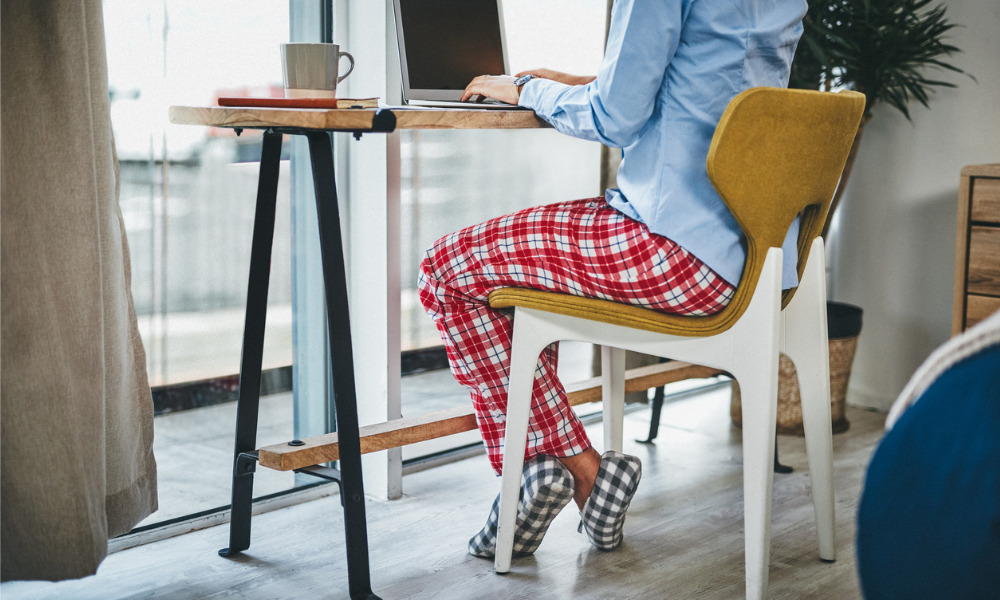
Fully remote, fully on-site — or somewhere in between

After noted work-from-anywhere author Malcolm Gladwell recently complained about employees’ experiences working from home, the issue of exactly what and where is the best place to work has surfaced again.
“I know it’s a hassle to come to the office… but if you’re just sitting in your pajamas in your bedroom, is that the work life you want to live? Don’t you want to feel part of something?” said Malcolm Gladwell, author of Blink and The Tipping Point, in an appearance on the “Diary of a CEO” podcast hosted by Steven Bartlett.
Because people want “a feeling of belonging” and “to feel necessary,” they should be coming into workplaces more often than maybe just a few times a year. “It’s not in your best interest to work at home,” he says.
“It’s very hard to feel necessary when you’re physically disconnected.”
His comments struck a nerve for some on the internet, as one person commented in response.
“I have news for you Gladwell: the feeling of ‘belonging’ and ‘purpose’ I achieve is derived from my family and friends and all of my activities and hobbies outside of work. If someone needs to work in an office to achieve that sense of belonging, then it is those people that I pity and it is those people who should rethink their priorities,” writes “fishbone3333.”
But there may be some truth to what Gladwell is saying, according to another HR expert talking about the toxic new trend of “Quiet Quitting.”
It means an employee will give the bare minimum of effort in order to continue being paid, says Lauren Berry, people and culture manager at people-management platform Employment Hero.
“This idea of quiet quitting could be considered a subset of the ‘great resignation’ as this concept speaks to that ongoing trend that has come out of COVID. Individuals are re-evaluating their priorities and their work is front and centre of that re-evaluation for the first time in many years. Many things have changed, and there is a greater desire for flexibility, putting more boundaries between work and life, and shifting the mindset from living to work to working to live,” says Berry.
But for one company, the move to full-time remote has meant nothing but good results.
Givex has decided to have its more than 300 employees work remotely full time, instead of going to one of its offices in Canada, the U.S., Brazil, Mexico, U.K., Switzerland, Hong Kong, China and Singapore.
“Even though the pandemic was awful, we managed to get a lot done… we were able to make some acquisitions, we were able to raise funds, we were able to go public, we are able to open up another office, we moved data centres, we did all kinds of stuff during the pandemic. So, we didn’t miss a beat. As a matter of fact, I think productivity improved during that period of time,” says Don Gray, CEO,.
The company reversed its former ways and has now become fully flexible with how work is completed.
“As long as they’re getting their job done — and we have lots of ways to test that that’s actually true — then we don’t really care if you start at seven in the morning and have to take an hour off to take your kids to school and you work another two hours, then you take a break and you go for a run, then you come back do your thing,” he says.
For many organizations, this flexibility will continue long after COVID is a distant memory, but how should companies approach a hybrid solution?
Make it more attractive by offering such employee-requested items as yoga studios and office gyms, and access to a designated quiet space.
“People have figured out that work-life balance is way more important than it was before the pandemic and that needs to be met [by] an employer in order to lure people in the offices. In most cases, you need to offer similar types of services that you find near your home near the office, to make life easier for the workforce and make it make it worth coming to office,” says Samu Hällfors, CEO of office pods manufacturer Framery Acoustics in Tampere, Finland.